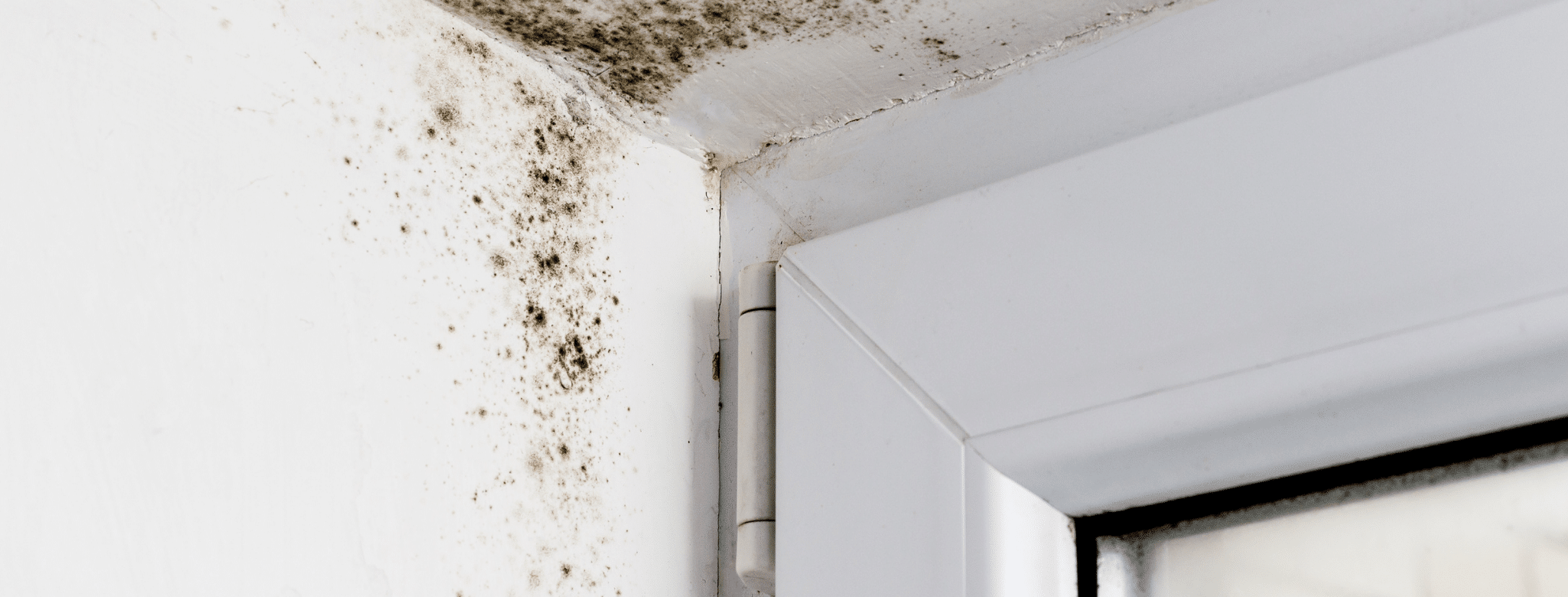Let’s start off by saying not all mold is bad. Mold and fungus tend to have negative connotations, but mold is also responsible for penicillin and blue cheese! Yeasts and fungi are used to make bread, beer, and wine. Some types of mushrooms are considered delicacies. Without fungi to break them down, the world would be buried in leaves, trees, grass, and garbage. However, there are ‘bad’ types of mold that can not only damage belongings and property, but can cause health issues as well.
What is Mold?
Mold is a type of fungus that thrives in damp, warm, and humid environments – both indoor and outdoor. If conditions are right, mold can grow virtually anywhere. While bathrooms (particularly shower stalls) and basements are prone to mold growth due to their moist environment, other spaces like drywall, framing, tiles, carpet, roofing, wallpaper, and under sinks can all harbor mold.
Mold grows in filaments and reproduces by forming tiny spores that can travel through the air unseen. These hardy spores can remain dormant for long periods of time and survive under dry and harsh conditions, They travel through the air and can enter your home through open clothing, pets, doorways, windows, vents, and heating/cooling systems – when they land on a surface where moisture is present, they can start to grow.
Symptoms of a Mold Allergy
Mold produces irritating substances that may act as allergens to sensitive individuals and cause the same symptoms that occur in other types of upper respiratory allergies. Signs and symptoms of allergic rhinitis can include
- sneezing
- runny or stuffy nose
- cough and postnasal drip
- itchy eyes, nose, and throat
- watery or red eyes
- rash
Like any allergy, mold allergy symptoms are triggered by an overly sensitive immune system response. When you inhale tiny airborne spores, your body recognizes them as foreign invaders and develops allergy-causing antibodies to fight them. After the exposure has passed, you still produce antibodies that ‘remember’ this invader, so that any later contact with the mold causes your immune system to react.
Prevention
Your best defense is to reduce your exposure. The best way to prevent mold in residential areas is to control moisture. There are several ways to do this:
- Identify and repair water problems such as leaks
- Use an air conditioner or air dehumidifier to prevent moisture buildup
- Avoid the use of carpets in bathrooms or humid basements
- Use fans and maintain good ventilation
- Add mold inhibitor products to household plants
- Use an overhead fan or open bathroom windows when showering for air circulation
- Add insulation to reduce the potential for condensation on cold surfaces such as windows, piping, and roofs
- Install a high-efficiency particulate air (HEPA) filter to trap mold spores from outdoor air before they are circulated inside your home
- Recycle old books and newspapers, especially if left in damp places with poor air like basements, as they can quickly become moldy
How O2 Nose Filters Can Help
Personal protection can be a little more obvious, or a little less obvious – O2 Nose Filters are the less obvious choice. Made with advanced 3M filtration technology, O2 Nose Filters capture airborne particles like a magnet. Most mold spores vary in size and are between 1-9 microns. Testing of our O2 Nose Filters has demonstrated 65% efficiency at PM2.5, increasing to 90% at PM10 and over. For more information regarding the performance and mechanics of O2, check out our White Paper.
Take Preventative Measures Now.
Click here for a FREE (+S&H) sample pack to see which size works best for you!



